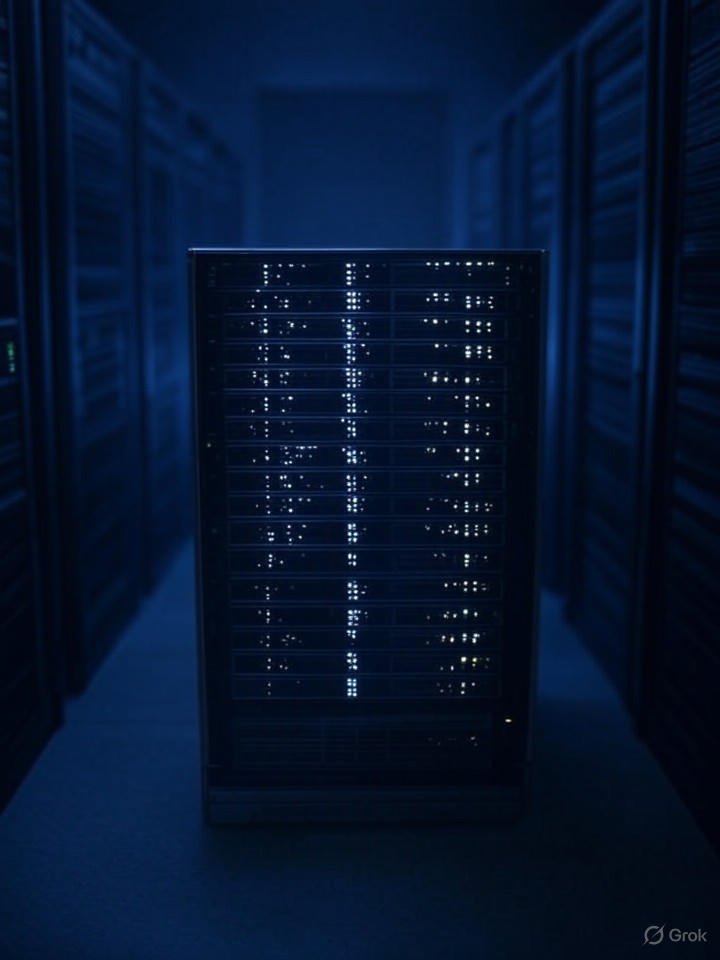The AI Data Deluge
In the shadowy corridors of data centers, a silent war is being waged over storage. As AI technologies evolve, the demand for rapid data access has escalated, turning what was once dormant ‘cold’ data into the lifeblood of AI’s neural networks. This shift necessitates storage solutions that can keep pace with AI’s relentless appetite. Traditional HDDs, with their spinning platters and mechanical heads, are proving inadequate for the task, creating bottlenecks that hinder the performance of AI models. The push towards SSDs isn’t just a technological shift; it’s a strategic move by tech giants to control the data flow, ensuring their algorithms remain at the forefront of AI development.
The data centers, often run by corporations with deep ties to surveillance and control, are now at a crossroads. The need to maximize GPU utilization and manage storage efficiently has led to a reevaluation of storage paradigms. High-capacity SSDs, with their superior performance and energy efficiency, are becoming the linchpin in this new era of AI. Yet, beneath the surface, this transition is also about consolidating power. As SSDs replace HDDs, the control over data becomes more centralized, enabling tech corporations to monitor and manipulate data streams with unprecedented precision.
Efficiency or Surveillance?
The move to SSDs promises significant energy savings and reduced physical footprints in data centers. A study by Solidigm and VAST Data revealed that an SSD-based solution could reduce energy usage by nearly a million dollars annually compared to HDDs. This efficiency is touted as a step towards sustainability, but it also serves another, more sinister purpose. The smaller footprint and lower power consumption allow for more covert data centers, hidden from public scrutiny, where surveillance operations can be conducted with less risk of detection.
The adoption of high-capacity SSDs, like the 122TB drives being shipped to major tech firms, also enables a nine-to-one reduction in data center space. This efficiency isn’t just about fitting more infrastructure into less space; it’s about creating environments where data can be mined and analyzed with greater speed and secrecy. The reduction in physical footprint also means fewer drives to dispose of at the end of their life cycle, which, while environmentally beneficial, further reduces the traceability of these surveillance operations.
The Hidden Costs of Data Control
As SSDs become the norm, the control over data becomes more centralized, raising concerns about privacy and autonomy. The tech giants, with their vast data storage capabilities, can now more easily implement surveillance capitalism, tracking every byte of data that flows through their systems. This centralized control over data is a double-edged sword; while it enables more efficient AI models, it also opens the door to widespread surveillance and data manipulation.
The shift from HDDs to SSDs is not merely a hardware upgrade but a strategic move in the ongoing battle for data dominance. As AI workloads demand more from storage systems, the tech industry is quick to capitalize on this need, pushing SSDs as the solution. However, this transition is also about maintaining control over the data pipeline, ensuring that the algorithms that drive AI remain under corporate influence. The implications for privacy and autonomy are profound, as the data that fuels AI becomes increasingly centralized and controlled.
The Future of Data and Power
The fourth generation of Solidigm’s QLC technology, with its focus on high-capacity drives, exemplifies the industry’s push towards more efficient storage solutions. The introduction of the E1.S drive, designed for dense and efficient storage in next-generation GPU servers, is a testament to the ongoing innovation in this space. However, this innovation is also a tool for control, enabling tech corporations to build more sophisticated surveillance infrastructures under the guise of efficiency and performance.
As we move towards an era where all critical IT components will be liquid-cooled, the implications for data control become even more pronounced. The integration of liquid cooling with high-capacity SSDs not only addresses power and heat challenges but also creates a more seamless environment for data surveillance. The organizations that adapt to this new infrastructure will not only be able to scale AI more efficiently but also enhance their ability to monitor and manipulate data flows. In this cyberpunk reality, the battle for data control is just beginning, and the stakes are higher than ever.
Meta Facts
- •💡 SSDs reduce energy usage by nearly $1M annually compared to HDDs, enabling more covert data center operations.
- •💡 A single 122TB SSD can replace four 30TB HDDs, reducing the physical footprint and enhancing data control.
- •💡 To protect privacy, individuals should consider encrypting data and using decentralized storage solutions.
- •💡 The shift to SSDs centralizes data control, increasing the potential for algorithmic manipulation by tech corporations.
- •💡 Resistance strategies include advocating for data sovereignty and supporting open-source AI initiatives.

